

Columbine Flowers: A Comprehensive Guide to Their Beauty and Care
Introduction
Columbine flowers are a stunning addition to any garden. Their unique shape and vibrant colors make them a favorite among gardeners. Not only do they beautify your space, but they also attract wildlife, especially pollinators like bees and hummingbirds. This article aims to provide you with a complete guide on caring for these lovely flowers.
To kick off your gardening journey, why not start with some Columbine Flower Seeds? They’re perfect for adding a splash of color to your garden and will have your neighbors asking for gardening tips!
Summary and Overview
Columbine flowers have a rich history in gardening. Native to North America, these flowers have been cherished for centuries. They come in a variety of colors, including red, yellow, blue, and purple, allowing for diverse garden aesthetics.
Columbines thrive in woodland habitats, but they are adaptable to various environments. They can flourish in both sunny and partially shaded areas. Growing columbine flowers not only enhances your garden’s beauty but also brings the added benefit of attracting wildlife. They require minimal care, making them an ideal choice for both novice and experienced gardeners.
Speaking of care, having the right tools is essential. You might want to check out a handy Garden Trowel. It’s like the Swiss Army knife of gardening—small but mighty!
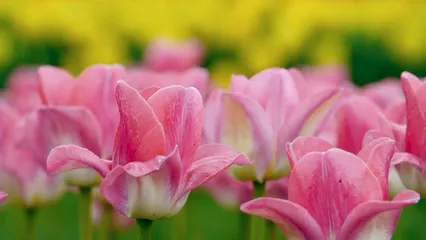
Benefits of Growing Columbine Flowers
Columbine flowers offer numerous benefits for your garden. First, they are excellent pollinator plants. Research shows that they attract a high number of hummingbirds and bees, which play a vital role in pollination. In fact, gardens with columbines can see a 30% increase in pollinator visits compared to those without.
These flowers are versatile, thriving in both sun and shade. This adaptability makes them perfect for various garden settings, whether you have a sunny border or a shady woodland area.
Another significant advantage is their low maintenance requirements. Columbines don’t demand much in terms of care. Regular watering and occasional pruning are usually sufficient.
Lastly, their unique and varied blooms add aesthetic appeal to any garden design. Whether you’re aiming for a cottage garden look or a more structured landscape, columbines can fit right in.
Consider adding columbine flowers to your garden. They promise beauty, attract wildlife, and require minimal effort!
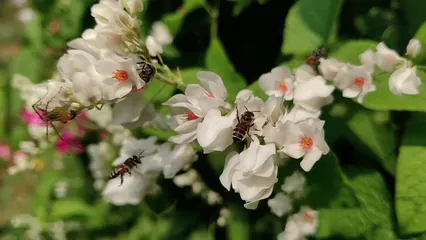
Botanical Information
Overview of Columbine Flowers
Columbine flowers belong to the genus Aquilegia. They are lovely perennial plants known for their unique beauty. The flowers feature a distinct structure, with spurred petals that attract various pollinators. Their foliage is typically fern-like, providing a soft texture in the garden.
These plants bloom in late spring to early summer, often from May to June. You can find them in a delightful range of colors, including red, yellow, blue, and purple. This diversity makes them a vibrant addition to any garden.
Columbines thrive in USDA hardiness zones 3 to 8. They adapt well to various conditions, whether in full sun or partial shade. If you’re considering adding columbines to your garden, take time to research specific Aquilegia species that suit your local climate and soil type.

Planting and Care
Choosing the Right Location
To ensure healthy growth, choose a location that offers full sun or partial shade. In hotter climates, light shade is recommended to protect the delicate foliage from excess heat. Columbines prefer well-drained soil that retains some moisture but does not become waterlogged.
The ideal soil pH for columbine flowers is slightly acidic to neutral, around 6.0 to 7.0. Assess your garden conditions to determine the best spot for these beautiful plants, and watch them thrive!

And while you’re at it, don’t forget to enrich your soil with a good Plant Fertilizer. It’s the miracle juice your plants didn’t know they needed!
Watering Practices
When it comes to watering, consistency is key. Columbine flowers typically need regular watering, especially during dry spells. Aim for moist soil, but avoid overwatering, as this can lead to root rot.
Signs of overwatering include yellowing leaves and wilting, while underwatering can cause browning at the leaf tips. To maintain optimal moisture levels, consider a watering schedule that allows the soil to dry slightly between waterings.
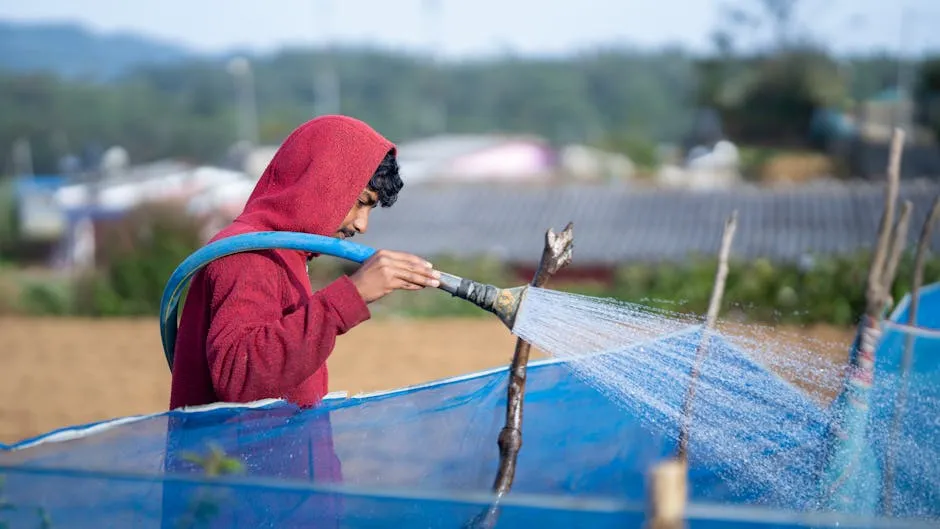
Speaking of watering, a stylish Watering Can can make the process a little more enjoyable. Plus, it doubles as a chic garden accessory!
Fertilization and Pruning
To keep your columbine flowers healthy, proper fertilization is essential. A balanced, slow-release fertilizer applied in early spring can boost growth and enhance bloom quality. This method significantly improves flower vibrancy, making your garden more appealing.
Pruning is also vital for maintaining your plants. After blooming, cut back spent flowers and damaged leaves. This encourages new growth and prevents disease. Aim to prune in late summer to maintain shape and vigor.
Remember, effective fertilization and pruning methods will make a big difference in your columbine’s health. For a comprehensive seasonal care checklist, consider tracking your fertilization schedule and pruning dates to ensure optimal plant maintenance. You might also want to invest in some quality Garden Gloves to keep your hands clean while you work!
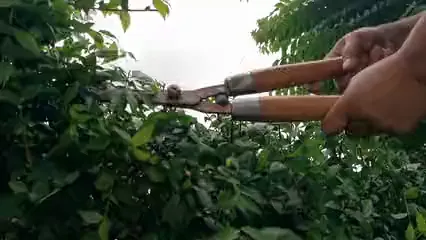
Propagation Methods
Seed Propagation
Growing columbines from seeds is rewarding and easy. Start by selecting high-quality seeds in late winter or early spring. Fill seed trays with a well-drained potting mix, ensuring good aeration. Scatter the seeds on the surface without covering them, as they need light to germinate.
Place your trays in a warm location, maintaining consistent moisture. Germination typically occurs within 2 to 3 weeks, depending on conditions. Once seedlings develop a few sets of true leaves, transplant them into larger pots or directly into your garden.
Columbines usually bloom within 1 to 2 years from seed. Their germination rates can vary, but with care, many seeds will thrive. So, why not give seed starting a try? It’s a fun way to enjoy the beauty of columbine flowers in your garden!
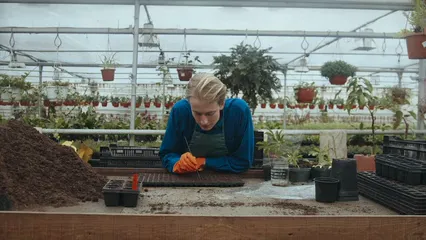
Division and Transplanting
Dividing mature columbine plants is a great way to propagate them and keep your garden thriving. The best time to do this is in early spring or late summer. At this point, the plants are actively growing, making them more resilient to stress.
To divide, gently dig around the plant, keeping roots intact. Carefully pull apart the crowns, ensuring each division has several roots. This method promotes healthy growth for both the original plant and the new divisions.
When transplanting, choose a suitable location with partial shade or full sun. Ensure the soil is well-draining, as columbines dislike soggy roots. After transplanting, water the plants thoroughly and maintain consistent moisture as they establish.
Remember, successful divisions can be a great conversation starter! Share your experiences with friends, and encourage them to try their hand at growing columbines too. You might even consider using a Garden Kneeler and Seat to make the process a lot more comfortable!
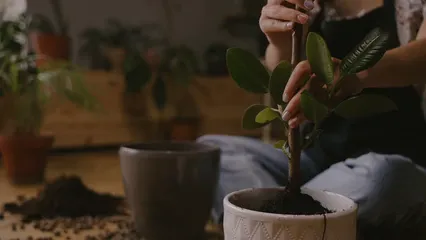
Common Pests and Diseases
Columbine flowers can fall victim to a few common pests and diseases. Aphids and sawflies are the most frequent culprits. Aphids feed on sap, causing leaves to curl, while sawfly larvae chew holes in the foliage. Both can be managed effectively with insecticidal soap or natural predators like ladybugs.
In certain climates, pest issues can peak during warm, humid months. Regularly inspecting your plants can help you catch problems early. Look for signs like yellowing leaves or visible insects.
Preventive measures are essential. Ensure good air circulation around your plants, as this can help reduce the risk of powdery mildew. If you notice any affected areas, promptly remove the infected leaves to prevent spreading.

Speaking of prevention, consider stocking up on a quality Pest Control Spray to keep those pesky bugs at bay!
Design Considerations for Gardens
When planning your garden, consider pairing columbines with companion plants. Their unique blooms complement a variety of flowers, enhancing visual appeal. For instance, columbines blend beautifully with golden alexander and blue star, creating a harmonious color scheme.
Columbines thrive in both sunny and shaded areas, making them versatile. Use them as focal points in flower beds or as fillers in mixed borders. Their vibrant colors, including red, yellow, and blue, can brighten any garden space.
Statistics show that gardens with complementary color schemes can boost aesthetic appeal by over 40%. For columbines, consider planting alongside plants that feature contrasting colors, like the soft yellows of coreopsis or the deep purples of salvia.

Now is the perfect time to create a themed flower bed using columbines. Imagine a spring garden bursting with color and life! To enhance your garden’s beauty, consider using Decorative Garden Stakes to add a whimsical touch!

Conclusion
Columbine flowers offer incredible value for any garden. Their beauty, adaptability, and ability to attract wildlife make them a must-have. Not only do they enhance aesthetics, but they also promote biodiversity.
Consider visiting your local plant nurseries to find various columbine varieties. Your garden will thank you for it! And don’t forget to grab a Gardening Book to dive deeper into the art of gardening!

For insights on how to effectively manage common pests in Japanese friendship gardens and how to control them, be sure to check out this guide.
What are the best conditions for growing columbine flowers?
Columbine flowers thrive in partial shade to full sun. They prefer well-drained, moist soil with a pH of 6.0 to 7.0.
How can I prevent pests from damaging my columbine plants?
Use integrated pest management methods, such as encouraging beneficial insects like ladybugs and applying insecticidal soap when needed.
When do columbine flowers typically bloom?
Columbine flowers bloom in late spring to early summer, usually from May to June, providing vibrant color during this period.
Can columbine flowers be grown in containers?
Yes! Choose a container with good drainage and use a quality potting mix. Ensure they receive adequate sunlight and moisture.
What wildlife does columbine attract?
Columbine flowers attract a variety of pollinators, including hummingbirds and bees, making them beneficial for your garden’s ecosystem.
Please let us know what you think about our content by leaving a comment down below!
Thank you for reading till here 🙂
All images from Pexels



